In 1939, Coventry had a population of around 238,000 and, like the rest of the Midlands, had an economy based around heavy industry and manufacturing, which ranged from automotive through to munitions. Thus, in some respects, Coventry represented a potential legitimate target of war. During World War One, Coventry, being an already industrialised city with a strong skilled workforce, was rapidly able to make the switch to war production and alone was responsible for around 25% of all aircraft produced by 1918.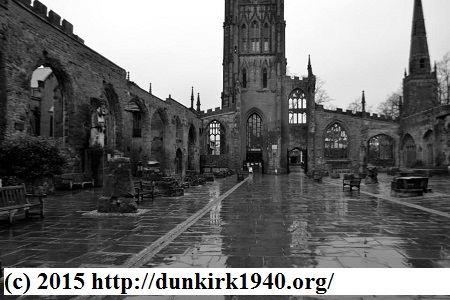
Coventry was originally founded by the Romans and had, over the following centuries, grown as a centre of the textile trade, thus becoming one of the most important and richest cities in England. In 1939, the city had grown, with a mixture of private and council estates surrounding the medieval heart of the city. The industry was relatively isolated from that of the housing. It is often cited that the bombing of Coventry in 1940 was entirely responsible for the destruction of much of the medieval heart of the city; however, there had been a somewhat lax attitude from the local council, which had already accounted for the demolition of parts of this medieval heritage during the run up to World War Two. Between August and October 1940, Coventry had already suffered seventeen air raids, which had killed 176 people and caused a temporary cessation of production in two local factories as a result.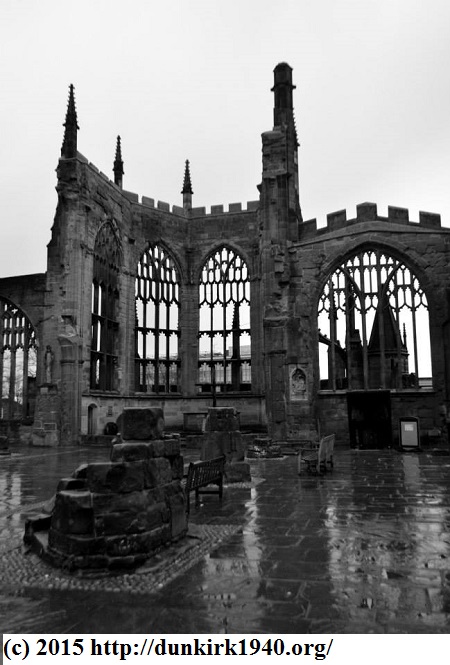
On November 14th 1940, 515 German bombers from Luftflotte 3 and pathfinders from Kampfgruppe 100 attacked Coventry in an operation code-named Mondscheinsonate (Moonlight Sonata). The purpose of the raid was to bomb the factories, although the result was far wider-reaching. The Luftwaffe was guided to the target using the X-Gerat system, which the British were, on this evening at least, unable to disrupt. The raid began with 13 HE-111's of Kampfgruppe 100 dropping marker flares at 19.20 hrs, which were followed shortly afterwards by the first wave of actual bombers armed with standard high explosive (HE) bombs; these destroyed the utilities services within the city, as well as causing further disruption on the ground by the closure of a number of bomb-damaged key routes, which would go on to hamper the ability of the fire and rescue services to deal with the ensuing chaos. Later waves of the raid were armed with incendiary bombs, along with HE, which started a number of fires across the city. While Coventry was well served with anti-aircraft defences, only one of the German raiders was actually shot down by them.
Around 20.00 hrs, Saint Michael's Cathedral (a 14th century Gothic construction) was hit by incendiary bombs, although this initial fire was quickly suppressed by members of the Auxiliary Fire Service (AFS). This minor victory was a short-lived triumph as there were further direct hits to St Michael's, which resulted in more fires breaking out. Combined with some 200 other fires locally, this soon accelerated into the inferno which is now referred to as the Coventry Firestorm. The destruction of the water mains, road closures and the issues of communication (the local phone system was afflicted) all lead to the inability of the local fire and rescue services from being able to cope with the task in hand. The raid reached its zenith at about midnight, although it was not until 06.15 hrs on November 15th that the all-clear was finally sounded.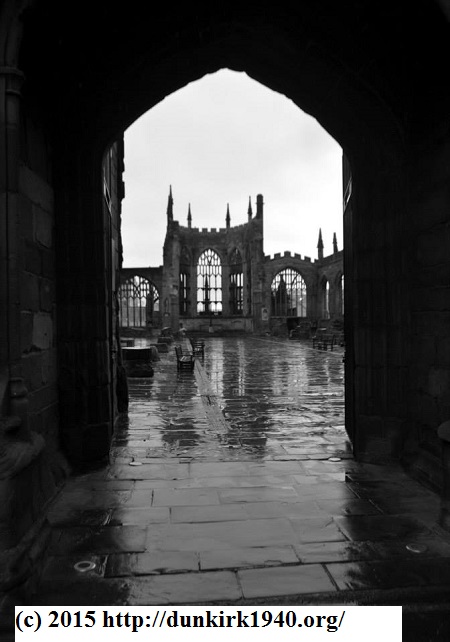
The damage was city-wide; some two-thirds of the city's buildings had been affected. This included the destruction of around 4,300 homes, one-third of the city's industrial infrastructure and two hospitals. The firestorm had razed the core of the city centre. It is estimated that 568 people had been killed, 863 badly injured and a further 393 suffering less seriously injuries. The relatively low casualties could well be attributed to the local habit of self-evacuation of the city, in which a sizeable proportion of the population would seek alternative accommodation in nearby towns and villages, as well as the effective air raid shelters.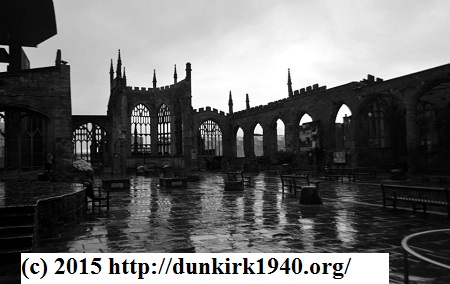
The Germans dropped a total of 500 tonnes of HE, which included some 50 parachute mines (essentially sea mines dropped over land by parachute) and 36,000 incendiary bombs.
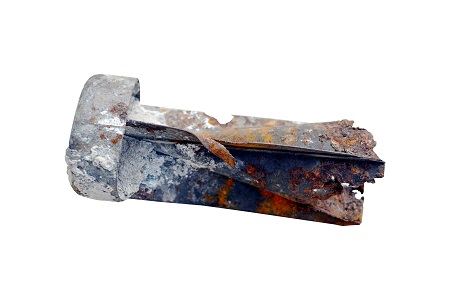 These are the remains of one of the 36,000 incendiary bombs which were dropped on Coventry on the night of November 14th, 1940. As intended, the body of the bomb was completely destroyed in the fire that it created; however, the stabilizing fins, being made of mild steel, often survived. Along with many of the others dropped on the city, it remained buried in the rubble until the post-war reconstruction, when the rubble was used as hardcore for the foundations of the new city. In 2004, further building works were carried out in the city centre, involving the demolition of some of the less-attractive aspects of the immediate post-war re-building. During this process, this example, along with many others, was rediscovered while the foundations of the new buildings were being dug. The additional white material is the remains of the concrete, in which it had been encased.
These are the remains of one of the 36,000 incendiary bombs which were dropped on Coventry on the night of November 14th, 1940. As intended, the body of the bomb was completely destroyed in the fire that it created; however, the stabilizing fins, being made of mild steel, often survived. Along with many of the others dropped on the city, it remained buried in the rubble until the post-war reconstruction, when the rubble was used as hardcore for the foundations of the new city. In 2004, further building works were carried out in the city centre, involving the demolition of some of the less-attractive aspects of the immediate post-war re-building. During this process, this example, along with many others, was rediscovered while the foundations of the new buildings were being dug. The additional white material is the remains of the concrete, in which it had been encased.
Complete example of a German incendiary bomb. This was also one dropped on Coventry on the night of the firestorm.
